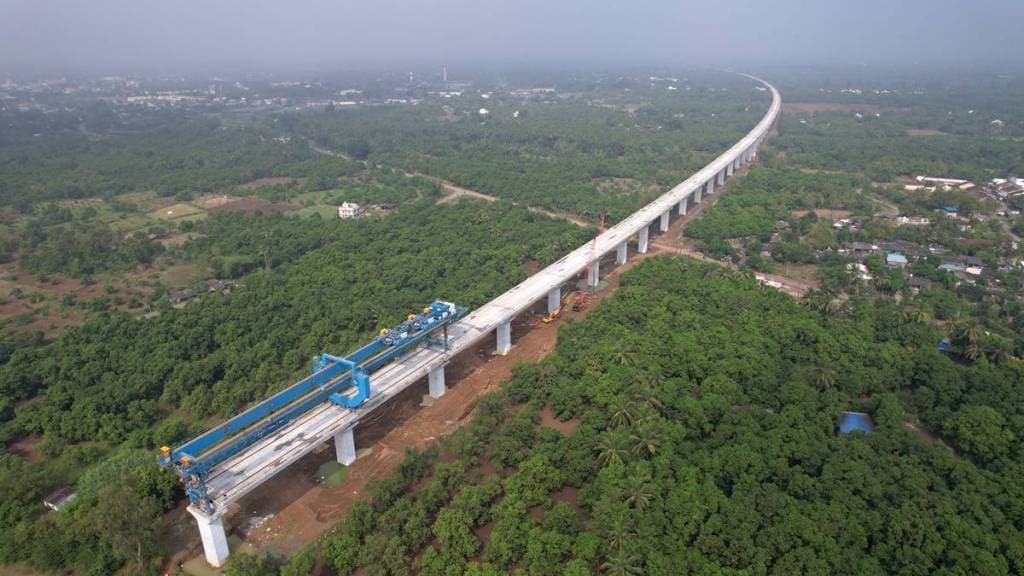Expressing contentment with the ongoing Mumbai-Ahmedabad bullet train project, Saito Mitsunori, the Chief Representative of JICA (Japan International Cooperation Agency) India, commended the PM Gati Shakti plan for expediting public works in the country. According to a PTI report, Mitsunori highlighted Japan’s interest in strengthening India’s border road networks and participating in the transnational power transmission project involving Bhutan, Nepal, and Bangladesh. He mentioned that the official preparatory route within the government has streamlined the project approval process, significantly reducing delays and cost overruns.
Mumbai-Ahmedabad bullet train project
Regarding the Mumbai-Ahmedabad High-Speed Corridor project, Mitsunori expressed satisfaction with the progress, highlighting the commencement of work on all sections. He emphasised the removal of uncertainties and praised the rapid and steady advancement of the project. JICA, a key funding partner for India’s major infrastructure ventures, including metro projects and rural development initiatives, has been actively contributing to the nation’s development.
Other key interests of JICA
In addition to ongoing collaborations, JICA is eager to assist in building resilient border roads in the Himalayan region, aiming to prevent incidents like the unfortunate tunnel accident in Uttarkashi.
Expressing interest in power transmission projects, Mitsunori revealed ongoing discussions with Nepal and Bhutan, emphasising the importance of efficient power sharing among regional countries. While there is enthusiasm, he expressed a mild disappointment with the slow decision-making process in trilateral and multilateral frameworks for power projects.
Highlighting recent developments, India and Nepal have officially signed an agreement for the export of 10,000 megawatts of electricity over 10 years. Nepal is on the verge of signing a tripartite agreement with India and Bangladesh, marking Nepal’s entry into the power export domain.
Mitsunori reiterated JICA’s commitment to collaborative initiatives and expressed optimism about the positive impact of ongoing projects on regional connectivity and development.
What is PM Gati Shakti Plan
The PM Gati Shakti Plan, initiated in 2021, aims to enhance multimodal connectivity infrastructure in economic zones across India. It is a strategic infrastructure development program aimed at enhancing the connectivity and efficiency of various modes of transportation and infrastructure projects across the country.
The key objectives of the PM Gati Shakti Plan include:
Multimodal Connectivity: The plan focuses on creating seamless connectivity across different modes of transportation, such as road, rail, air, and waterways. The goal is to improve logistics and transportation networks to facilitate the movement of goods and people.
Infrastructure Development: The plan aims to accelerate the development of critical infrastructure projects, including highways, railways, ports, airports, and more. This is intended to boost economic growth and development.
Economic Zones: The PM Gati Shakti Plan targets the creation of economic zones with improved connectivity to stimulate industrial and economic activities.
Reducing Delays: One of the objectives is to streamline and expedite the approval and implementation processes for infrastructure projects, reducing bureaucratic delays and ensuring timely completion.
Efficient Land Use: The plan emphasizes optimal utilization of land for infrastructure development, considering factors such as environmental sustainability and economic viability.
The PM Gati Shakti Plan is part of the broader vision of the Indian government to transform the country’s infrastructure landscape and promote sustainable economic growth. It involves coordination and collaboration among various ministries and departments to ensure the effective implementation of projects.


